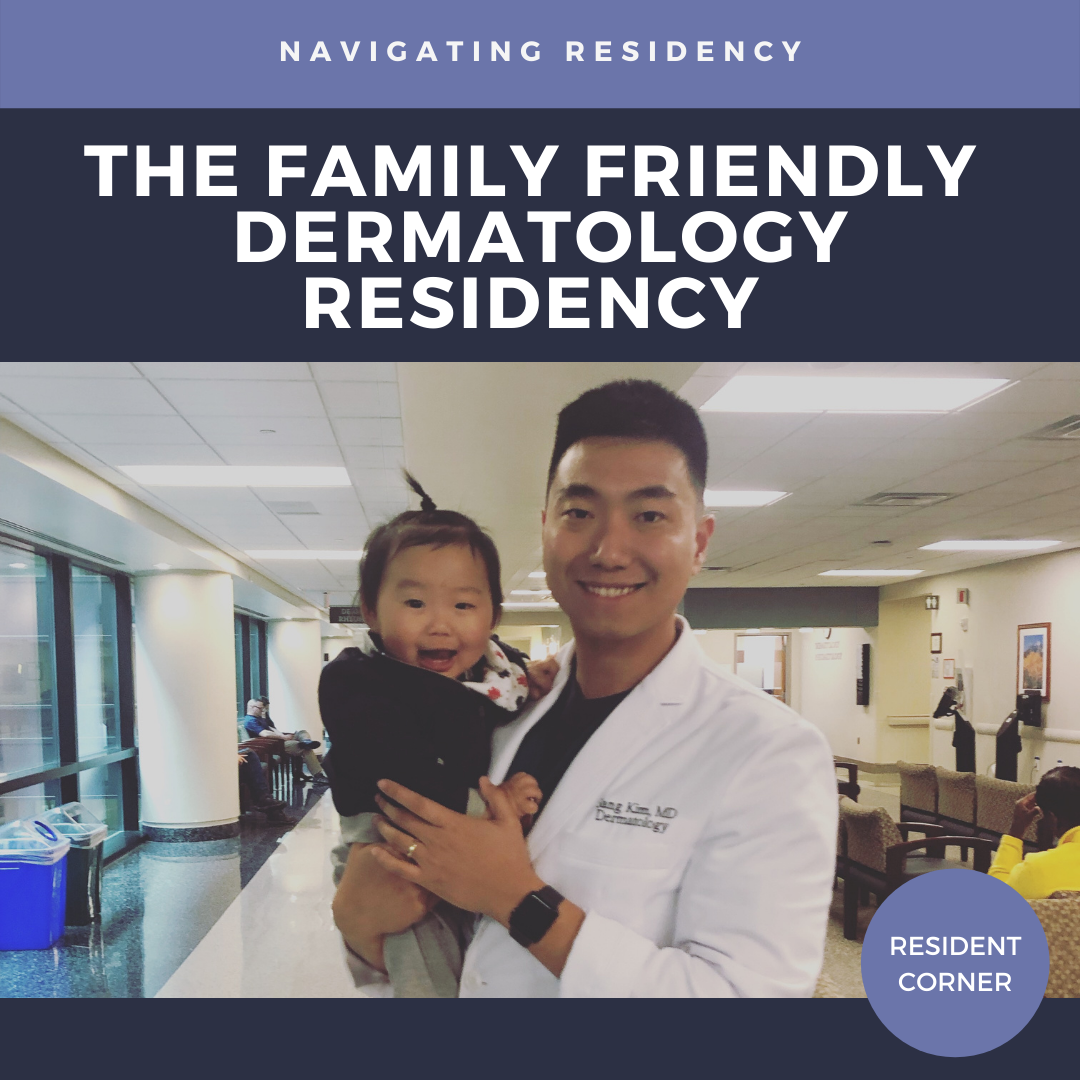Sang Kim, MD, was two weeks into his dermatology residency at Walter Reed National Military Medical Center when his wife was diagnosed with a serious pregnancy complication. “At that time, I felt my world was crashing down, and I immediately thought of the worst-case scenario; that I could lose my unborn son and wife.”
Thankfully, Dr. Kim’s son was born healthy, and his wife recovered. Dr. Kim found support in the residency program he had just begun. He received two weeks of paid paternity leave as part of his Navy benefits and was able to arrange a work schedule where he would come in only on Thursdays – the main academic days – so he wouldn’t fall behind with his studies. “Moreover, the residents and staff threw their arms around us and sent us many meals so we wouldn’t have to stress about cooking.”
Supporting trainees through major life events is the motivation behind a new leave policy by the Accreditation Council for Graduate Medical Education (ACGME) and the American Board of Medical Specialties (ABMS), which includes the American Board of Dermatology (ABD). Under the policy, which takes effect in July 2021, residents can take at least six weeks of parental leave or other medical leave without exhausting vacation time or extending their training.
“The new policy sends a strong message about the importance of wellness and work-life balance,” said Steve Daveluy, MD, FAAD, program director of Wayne State Dermatology. “That policy will help to make sure that parental leave doesn’t mean a resident has to sacrifice all their vacation time, which is great for wellness since we all know that taking care of a new baby is no vacation.”
InYoung Kim, MD, no relation to Sang Kim, MD, began residency when her son was three. She now practices at a multi-specialty physician group and said systemic changes “would make a world of difference to residents who are parents.”
Yet Dr. Daveluy acknowledges that more systemic changes are difficult to implement. “Programs across the country are very different in terms of the number of residents, funding, clinical experience, and other factors. This makes it difficult to give detailed guidance. But broad recommendations about supporting residents as parents, and sharing ideas and best practices have been helpful.”
Here are some best practices for dermatology residency programs and ways trainees can find more support for their work-life challenges:
Create a Program Culture of Giving and Support
“Lay the foundation of a supportive team right from the beginning,” Dr. Daveluy recommended.
“We want to create a team where we’re all eager to support each other whenever needed.”
Make Wellness an Institutional Priority
Janiene Luke, MD, director of the dermatology residency program at Loma Linda University Health, said her institution has an Office of Physician Vitality with the purpose of supporting the wellbeing of faculty and residents. “They not only offer lectures and Grand Rounds to bring awareness around topics of physician wellness, coping, mindfulness and prevention of burnout, but they also provide consultations as well as referrals when necessary.” Loma Linda also has “Chief” Wellness Residents, who are responsible for facilitating resident wellness within the department and institution overall.
Communicate Benefits
“We discuss maternity leave options at orientation each year to show our support,” Dr. Daveluy said.
Use Flexibility When Scheduling
Dr. Daveluy said there is quite a lot of flexibility with a resident’s schedule. “Even though there are some standards to show that a resident is adequately prepared, they aren’t so rigid that exceptions are impossible.” He recommends scheduling research elective time at the end of parental leave to allow for working at home. Teledermatology is another option.
Dr. Luke takes special care with a nursing mom’s daily schedule. “We allow breaks to accommodate for pumping time.”
Support and Encourage Residents
“We make sure that the residents know that we want to help with any work-life struggles,” Dr. Daveluy said.
“I would ask program directors to be kind to parent residents and to at least support them emotionally,” said Dr. InYoung Kim. “Kind words like, ‘you’re doing a great job, ‘I know you are really trying or struggling’ give us a sense of acknowledgment and can encourage us when times get hard. And this doesn’t take much.”
Recognize Non-Parental Life Struggles
“There is a risk that residents without children can feel like their time is not as important as the residents raising a family,” Dr. Daveluy said. “So, it’s important to discuss parental leave in the context of supporting your life and success, which includes everyone.”
Rely on Each Other for Help
“Our program is very close-knit, so we have had residents’ significant others, siblings, and even our attendings assist other residents if they needed childcare on short notice,” Dr. Luke said.
Be a Team Player
“Be always ready to pitch in,” Dr. Daveluy said. “And, if you’ll ever need support due to any work-life balance issues, you’ll be overjoyed with the outpouring of support you’ll receive. If you’re there for people, they’ll be there for you.”
Utilize Extended Training, When Needed
“If someone requires more time, it simply means their training may need to be extended to make sure they have the training and experience required to practice without supervision,” Dr. Daveluy said. “This doesn’t mean the resident needs to delay their board exam either. So, the system allows for a good amount of flexibility and individualization.”
Dr. Kim and his wife recently had their second child. Due to his wife’s medical history, this pregnancy required additional prenatal appointments, and Dr. Kim was able to attend most of them. Their daughter was born healthy – with no complications – and with the support of the residency program.
Image courtesy of Dr. Sang Kim
Did you enjoy this article? Find more on Navigating Residency here.

